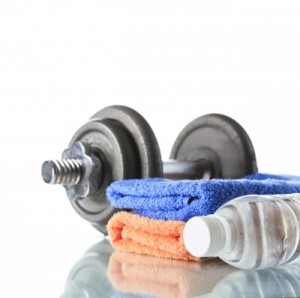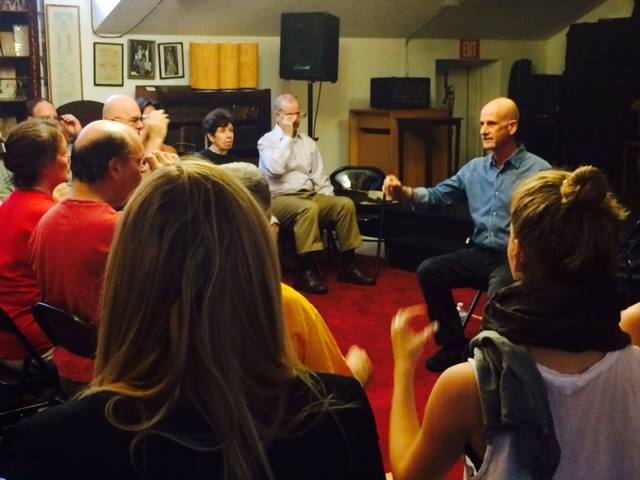Exercise: Something that is done or practiced to develop a particular skill.
Exercising, or working out is great for you, especially if you employ the Alexander Technique while exercising. I love to see the gym, in my rearview mirror.
Exercise promotes health of the cardiovascular, respiratory, nervous, digestive, musculoskeletal, and hormonal systems. Exercise can reduce depression, increase well-being and more.
Alexander Technique exercises
Alexander Technique exercises decrease tension instead of increasing it.
Alexander Technique exercises have more to do with undoing then doing. Alexander Technique exercises concern themselves with using the minimum amount of muscular activity, instead of the maximum. For example:
See how little neck tension you need to perform the simple, everyday action of sitting down and standing up. It’s an exercise in reducing stress, and doing less.
When muscles are working, they are shortening. When you shorten your neck, you’re shortening you. Remind yourself throughout your day to un-tighten your neck, stopping your head from pressing down on your spine. While you’re at it, breathe more fully. Let go of tension anywhere you notice it.
Your jaw gets enough exercise when you’re chewing. When you’re finished chewing this over, let go of your jaw.
If you tense your bicep all day, it may or may not get stronger, but you’re ripe for a cramp. If you tense your neck or lower back all day, you may get a cramp, neckache, backache, or headache etc..
Notice when you’re slumping, compressing, and tightening. (Awareness) After noticing it, inhibit your impulse to quickly fix it. (Inhibition), and direct yourself. (Direction). Awareness, Inhibition, Direction—AID.
Let go of the muscles in the back of your neck, and your head will move up, taking the spine up with it. Let yourself breathe fully, and slightly smile.
Exercise your right to exorcise these exercises.
1. Tuck your chin – Don’t
You’re poking your chin forward, so it makes sense to stick it back. Easy fix, right? But there are problems with that solution, as that solution may cause problems. Instead:
a) Practice letting go of any neck tension.
b) Let your head rotate forward and up by slightly, slowly lowering your nose as the crown of your head moves up.
c) Your chin is no longer poking forward.
2. Imagine a string pulling your head up—Don’t
—
You’ll be adding tension, so you won’t be able to maintain this posture without tensing; without posturing. And lastly, it won’t last. Instead:
a) Practice letting go of any neck tension.
b) Let your head rotate forward and up by slightly, slowly lowering your nose as the crown of your head moves up
c) Notice that you’re more upright, but it’s an easy, sustainable upright.
3. Stomach in, chest out, shoulders back —Don’t
Ouch. Instead:
a) Practice letting go of any neck tension (free your neck)
b) Let your head rotate forward and up by slightly, slowly lowering your nose as the crown of your head moves up. (Free your neck to allow your head to move forward and up.)
c) Let your head lead your spine up.
d) If you’re sitting, let your sit bones release down into the chair in opposition to your head and torso moving up. You’re lengthening.
e) Let your breathing be fuller.
f) Take an Alexander Technique lesson with a certified Alexander Technique teacher.
Mark Josefsberg-Alexander Technique NYC
Mark@MarkJosefsberg.com
(917) 709-4648
Image courtesy of Freedigitalphotos.net-Dumbbell With Water And Towel by Naypong











As I go out to teach a Pilates class, I get to pause and delicately release my neck as I let my nose slowly and slightly move down and the crown of my head move up. Love it! I too am exorcising my exercise.
Thanks Diane!